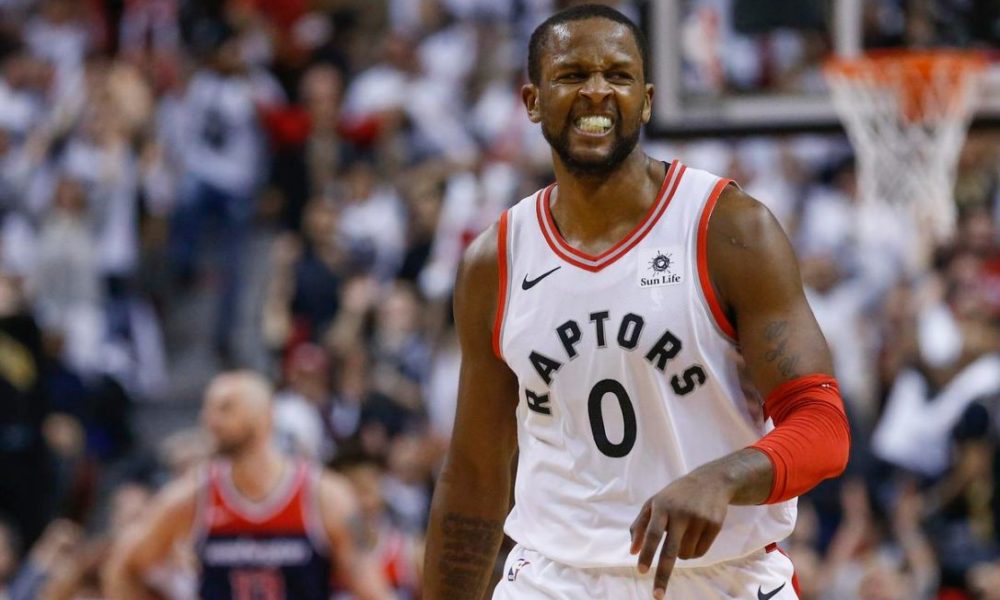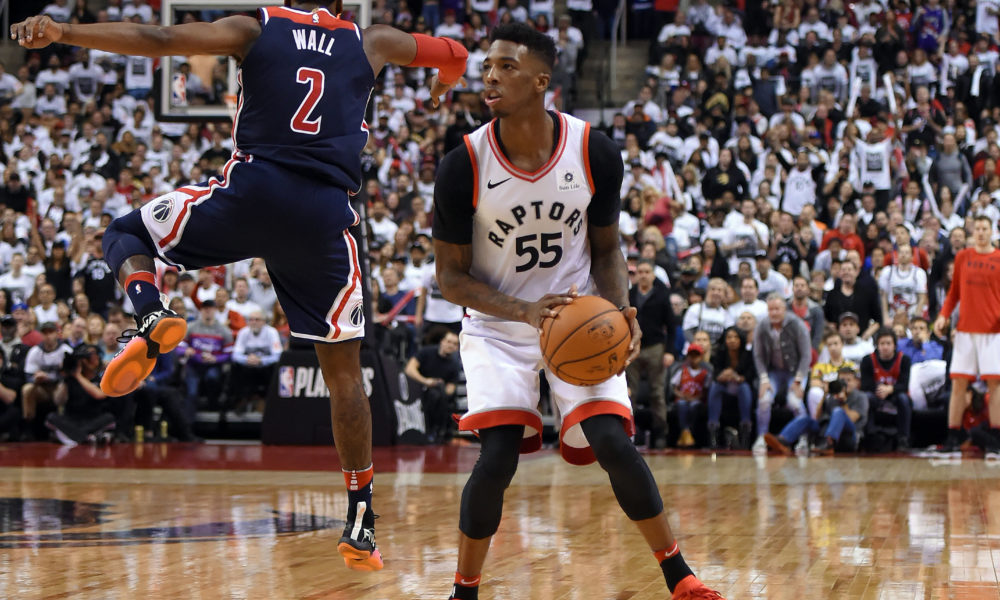After winning the first two games of a playoff series for the first time in franchise history, the Toronto Raptors were a confident group heading to Capital One Arena for Games 3 and 4 against the eighth-seeded Washington Wizards.
Everything went the Raptors way on the offensive end in Games 1 and 2, in large part due to smart ball movement constantly creating clean looks. Toronto headed to Washington having averaged 25 assists over the series’ first two games. Thanks to high assist totals, the Dinos shot 52 percent on field goals and 44 percent from 3-point range over those games. It’s also worth mentioning that Toronto only turned the ball over 21 times through the first two games. Buckets were dropping in all over the place, making Raptors fans far and wide quite ecstatic. Thoughts of potentially ending a series in less than six games even started to trickle into the minds of Raptors fans.
Some regression in Toronto’s offensive efficiency was to be expected when the series shifted venues. Playing in an opposing team’s building can have that impact, after all. What transpired in Washington wasn’t just regression, though. No, no. It was far worse than that.
The Raptors went from playing with the same confidence and cohesiveness that helped them win a franchise-best 59 regular season games to playing as a seemingly intimidated group. The crisp, decisive passing from Games 1 and 2 was replaced by indecisiveness. Unsurprisingly, turnovers started to pile up for Toronto. 18 giveaways in Game 3 followed by another 18 in Game 4 is unacceptable for any playoff team, let alone a number-one seed.
And that was just the start.
Remember when we thought the days of inefficient late-game offensive possessions were over? I guess they aren’t after all.
DeMar DeRozan, in particular, was guilty of some poor decision making on the offensive end late in Game 4. Stagnant play got the best of the all-star, as DeRozan took some forced mid-range jumpers, the same type of shots that many believed were no longer relevant to the 2017-18 Raptors’ new-look offence. Isolation basketball is the epitome of evil. Don’t we realize that by now? It almost never can be relied upon in late game situations. Going forward, one can only hope the Raptors find a way to feature more pick-and-rolls in late game situations, rather than settle for contested jumpers.
Aside from the self-inflicted wounds caused by turnovers, poor shot selection, and lousy late-game execution, the Raptors had no answer for Washington’s star-studded back-court in both games at Capital One Arena. John Wall and Bradley Beal combined to average 57 points on 49 percent shooting in Games 3 and 4. Wall repeatedly penetrated the Raptors interior defence in both contests, which opened up clean, uncontested looks for Beal on the perimeter that he consistently knocked down. When both Wall and Beal are navigating the floor freely in half-court sets and in transition like they did in Games 3 and 4, the Wizards become an entirely different animal. This Washington team has far more talent on its roster than a typical eight-seed, which the Raptors learned the hard way.
After all the drama that’s transpired, this series is now knotted up at two games apiece. Gone is the hope of ending a series in under six games. Instead, that hope has been replaced with concern.
Concern that, despite their regular-season success, the Raptors may still resort back to their old offensive identity when in desperation.
Concern that an underdog Wizards team with all the momentum heading back to Toronto could actually push the Raptors to the brink.
Concern that the Raptors playoff journey may somehow come to an end before it truly begins.
Hopefully, none of these concerns become a reality.



